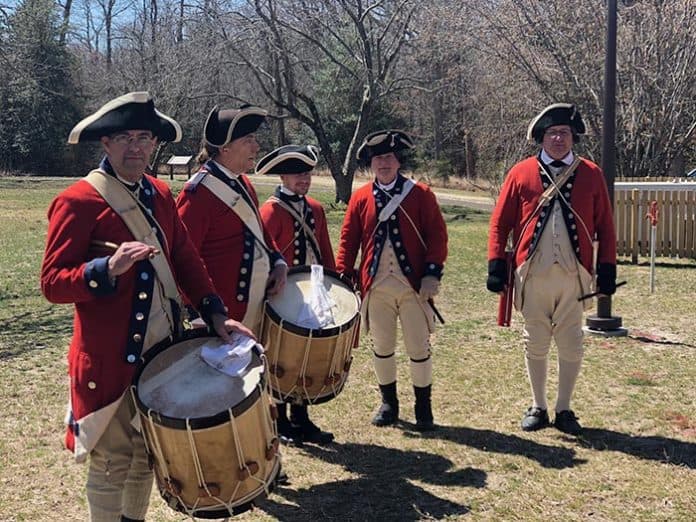
BARNEGAT – If you weren’t looking for it, you might never find it.
Off the beaten path, in the heart of the Pinelands of Barnegat sits the newly restored, historic Cedar Bridge Tavern. The tavern is located adjacent to the intersection of Routes 72 and 539 in the Township, where locals can visit for a little trip back in time.
Ocean County Freeholder Director Virginia Haines saw it fitting to quote the late Freeholder John C. Bartlett at the grand opening of the tavern on April 1: “Freeholder Bartlett said ‘We make every effort to keep history alive in Ocean County and we bring it to our residents in a variety of ways; whether recreating a battle or holding an appropriate ceremony to commemorate and recognize and event, our history is what shapes our future.’”
The Cedar Bridge Tavern is a 17th century era building dating back to 1816, with a kitchen addition circa the 1830s. The tavern is strategically located along the original stagecoach route from the west to the shore.
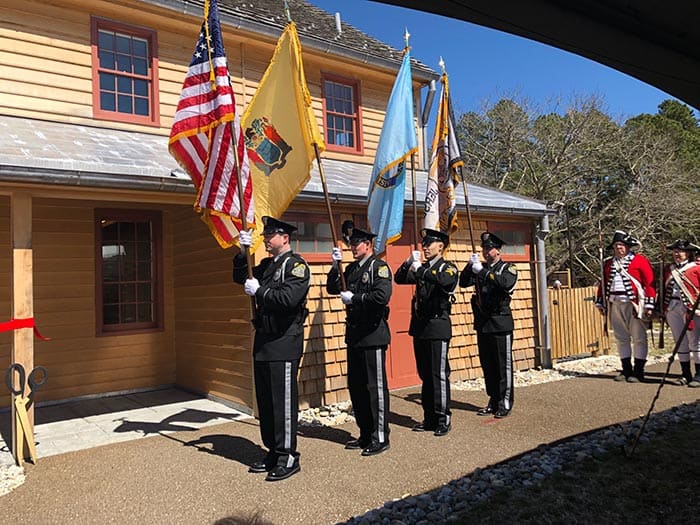
“The Cedar Bridge Tavern is a historic treasure that offers a unique window into the European experience in the New Jersey Pinelands. From about 1740, a saw mill existed on the nearby branch of the Wading River and the town grew around the intersection of a major east/west thoroughfare and a southern route to reach Egg Harbor and Tuckerton. Eventually, two taverns in this hamlet served the travelers, hunters and rural region,” according to the County Cultural & Heritage Commission.
The property at Cedar Bridge Tavern saw some of the United States’ major historical moments including the Revolutionary War from 1775-1783.
The Battle of Monmouth took place during the Revolutionary War in June of 1778. That war also saw the Affair at Egg Harbor Township in 1778, Manahawkin Skirmish in 1781, Toms River Block House Fight in 1782, Barnegat Light Massacre in 1782, and the Cedar Bridge Skirmish in 1782.
This period of history didn’t yet know Democrats or Republicans, but rather Patriots and Loyalists.
Captain Reuben Randolph was a Manahawkin Patriot who lived until 1807. Randolph led a company of 20 men of the 2nd Monmouth Militia in Stafford Township into the Battle of Monmouth. He was also frequently heading off against infamous Loyalist John Bacon.
Bacon was a Loyalist leader, representing the group, also known as the Pine Robbers in this area.
The Cultural & Heritage Commission notes the last-documented engagement on this property occurred on December 27, 1782, “Captain Richard Shreve of Burlington County Light Horse and Captain Edward Thomas of the Mansfield militia stopped with their men to refresh themselves at a nearby tavern” when Bacon and his Pine Robbers surprised them with an attack.
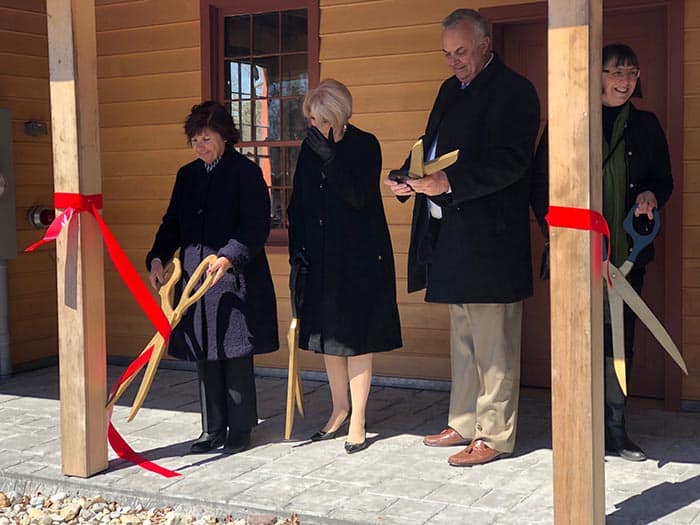
Just as the Burlington militia took the advantage, a party of locals created a diversion that helped Bacon to escape. Despite the help, Captain Bacon was one of four Loyalists injured in the attack.
On April 3, 1783, Bacon was killed resisting arrest by the Burlington militia.
An abridged rendition of the folk song “The Ballad of John Bacon” was performed by Valerie Vaughn during the opening ceremony.
Through the centuries, the building changed hands from owner to owner, the most recent of which was Rudolph Koenig. The Ocean County Board of Chosen Freeholders purchased the tavern from the Koenig family in December 2007, while also granting Koenig a “life estate” to live on the property.
After Koenig passed on January 12, 2012, the County began undertaking a complete restoration of the building which would take years and the efforts of the Board of Chosen Freeholders, Department of Parks and Recreation, and the Cultural and Heritage Commission to accomplish.
The grand opening of Cedar Bridge Tavern was held on April 1 at the site, accented by the Posting of Colors by the Ocean County Sheriff’s Office Color Guard and keynote speakers who had a hand in the project.
Architect Annabelle Radcliffe-Trenner of Historic Buildings Architects, LLC designed the plans and oversaw the detailed and historically accurate restoration process.
“This has been a long journey with a very talented team…a successful preservation project is about team collaboration, hard work, and understanding the heritage siteto be preserved,” said Radcliffe-Trenner. “We had archeologists, we had dendrochronologists, we had resistance drilling experts from Colorado, we had landscape assessments, civil engineering and environmental impact studies for the Pinelands, we had materials science tested…we had building conditions assessments including structural and architectural investigations.”
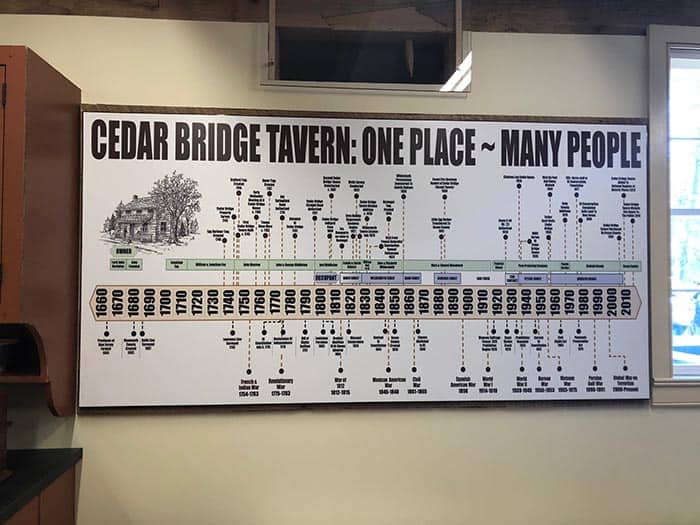
Radcliffe-Trenner described the restoration process as “peeling back the layers” of various alterations over the years to see what changes have been made. This was how they were able to develop “a philosophy of true authenticity” that would respect and accurately recreate the history of the property.
You might be asking yourself: why so much work for this little tavern?
“Taverns, referred to as ordinaries, were regulated in 1709 and this tavern built in 1816 is important because of its rural setting at the crossroads of two stagecoach routes,” she explained.
Through the restoration process, they made some historically valuable discoveries such as original clapboard, alterations made by Rudolph Koenig, traditional wood framing, signage from Christmas Eve of 1907, a partition along the ceiling indicating separate rooms, and the original dark green finish of one room that may have been a ladies’ parlor at one point.
Ocean County Historian Tim Hart elaborated on the historical discoveries of the site, stating: “Europeans have been on this site since at least 1743…the Native Americans, before the Lenapes, we found a crack rock
this was a stopping off place for them….Napoleon Bonaparte’s brother Joseph stopped here, we know that because he dropped off a coin.”
Hart was introduced to Cedar Bridge in the 1990s; before this, he had never even known of its existence. After that, Hart became more familiar with the site, joining in numerous reenactments there where he met former owner Mr. Koenig.
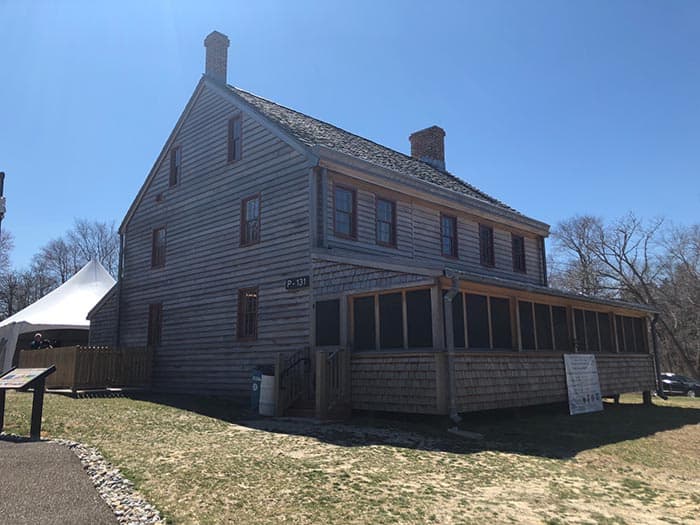
“Mr. Koenig…was a remarkable man,” said Hart.
The proposal to preserve the building was soon brought to his attention and Hart then brought it to former Freeholder Bartlett. When Bartlett asked how much the project would cost, Hart estimated about $150,000, a figure which he now jokes as “off by a wide margin.”
Funded in part by grants from the New Jersey Historic Trust and Sandy Disaster Relief grants, the restoration cost the county $324,926. The NJ Historic Trust’s partial funding for the project was provided by The National Park Service, Department of Interior; Historic Preservation Office, Department of Environmental Protection.
“This is not the end…we’re still discovering new things,” said Hart.
Cedar Bridge Tavern might be a bit difficult to get to, located in the woods off of Old Cedar Bridge Road, but it is always open to the public.
More information can be found at co.ocean.nj.us/ch/frmCedarBridgeTavern.aspx.







